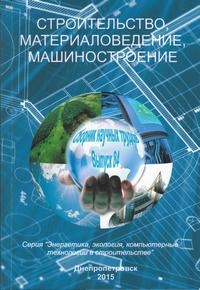Evaluation of the level of air pollution in emergency situation on railway transport
Keywords:
Аir pollution, railway transport, transport of dangerous cargo, numerical modelingAbstract
Purpose. The development of numerical models for the prediction of air pollution by burning solid propellant in a railway carriage, which is located near the building on railway territory.
Methodology. For the numerical simulations of pollutant transport use implicit change triangle difference schemes. To solve this problem developed numerical models based on the use of Navier-Stokes equations, to determine the velocity field of the wind flow near the cars and buildings, transport equation impurities in the atmosphere. When constructing a difference scheme is carried out physical and geometric splitting of the transport equation in the four steps. Unknown value pollutant concentration at each step of cleavage is determined by the explicit scheme.
Findings. Numerical models are used for production of various settlement scenarios emergency and diagnostic intensity of pollution. Computational calculations are made to determine the concentration of the pollutant and the formation of the zone of air pollution on a scale «microscale» and «local»
Originality. Created numerical models to take into account relevant factors influencing the process of dispersion of pollutants in the atmosphere. Practical value. Efficiency of numerical models «diagnostic models» for the express calculation of the level of air pollution in emergency situations in the case of transport by rail of solid rocket propellant. Models can be used in the development of PLAS. The proposed model allows to calculate the hydrodynamics of the 2D wind flow and mass transfer process of hazardous substances in the atmosphere.
References
Belyayev N.N., Berlov A.V., Mashykhina P.B. Modelirovanie nestatsionarnykh protsessov avariynogo zagryazneniya atmosfery [Modeling of non-stationary processes of emergency air pollution]. Dnipropetrovsk, Aktsent PP Publ., 2014. 127 p. http:// ……
Bruyatskiy Ye.V. Teoriya atmosfernoy diffuzii radioaktivnykh vybrosov [Theory of atmospheric diffusion of radioactive emissions]. Institut gidromekhaniki NAN Ukrainy Kyiv, 2000, 443 p. http:// ……
Metodyka prognozuvannya naslidkiv vylyvu (vykydu) nebezpechnykh ximichnykh rechovyn pry avariyakh na promyslovykh obiektakh i transporti [Methods predict the consequences of the outpouring (emission) of hazardous chemicals in accidents at industrial sites and transport]. Kyiv, 2001, 33 p. http:// ……
Biliaiev M. M. Numerical simulation of indoor air pollution and atmosphere pollution for regions having complex topography / M. M. Biliaiev, M. M. Kharytonov // Conference Abstracts of 31st NATO / SPS International Technical Meeting on Air Pollution Modelling and it’s Application. – Torino, Italy, 2010. – № P1.7. http:// ……
Downloads
Published
Issue
Section
License
Редакція Видання категорично засуджує прояви плагіату в статтях та вживає всіх можливих заходів для його недопущення. Плагіат розглядається як форма порушення авторських прав і наукової етики.
При виявлені у статті більш ніж 25% запозиченого тексту без відповідних посилань та використання лапок, стаття кваліфікується як така, що містить плагіат. У цьому випадку стаття більше не розглядається редакцією, а автор отримує перше попередження.
Автори, в статтях яких повторно виявлено плагіат, не зможуть публікуватися в усіх журналах Видавництва ДВНЗ «Придніпровська державна академія будівництва та архітектури».
Автори, які публікуються у цьому журналі, погоджуються з наступними умовами:
- Автори залишають за собою право на авторство своєї роботи та передають журналу право першої публікації цієї роботи на умовах ліцензії Creative Commons Attribution License, котра дозволяє іншим особам вільно розповсюджувати опубліковану роботу з обов'язковим посиланням на авторів оригінальної роботи та першу публікацію роботи у цьому журналі.
- Автори мають право укладати самостійні додаткові угоди щодо неексклюзивного розповсюдження роботи у тому вигляді, в якому вона була опублікована цим журналом (наприклад, розміщувати роботу в електронному сховищі установи або публікувати у складі монографії), за умови збереження посилання на першу публікацію роботи у цьому журналі.
- Політика журналу дозволяє і заохочує розміщення авторами в мережі Інтернет (наприклад, у сховищах установ або на особистих веб-сайтах) рукопису роботи, як до подання цього рукопису до редакції, так і під час його редакційного опрацювання, оскільки це сприяє виникненню продуктивної наукової дискусії та позитивно позначається на оперативності та динаміці цитування опублікованої роботи (див. The Effect of Open Access).

